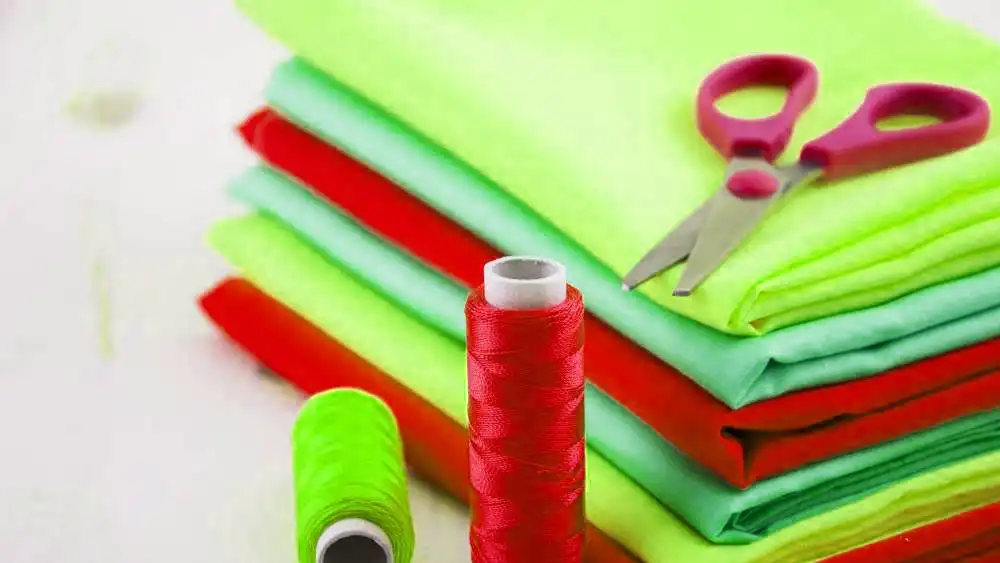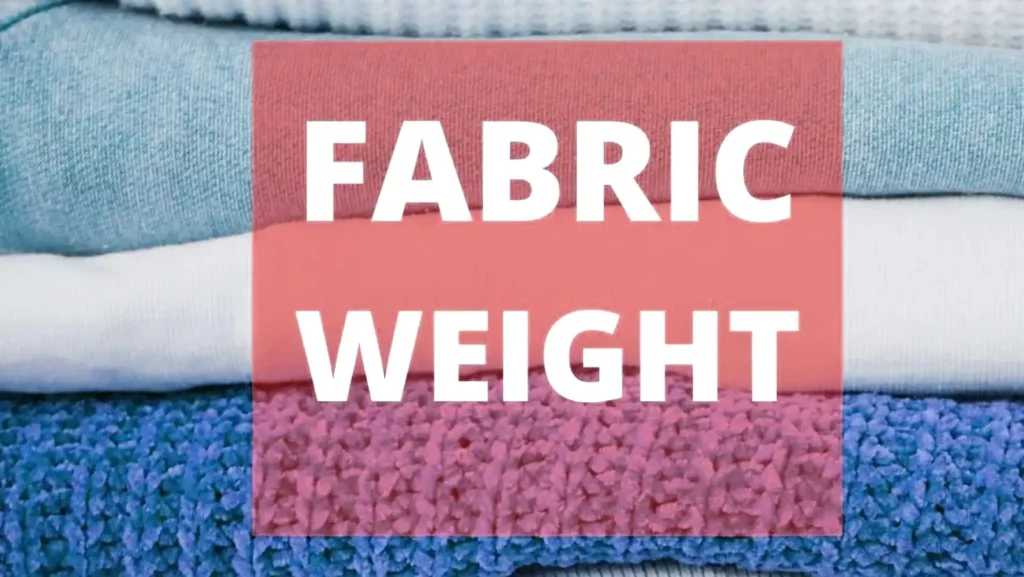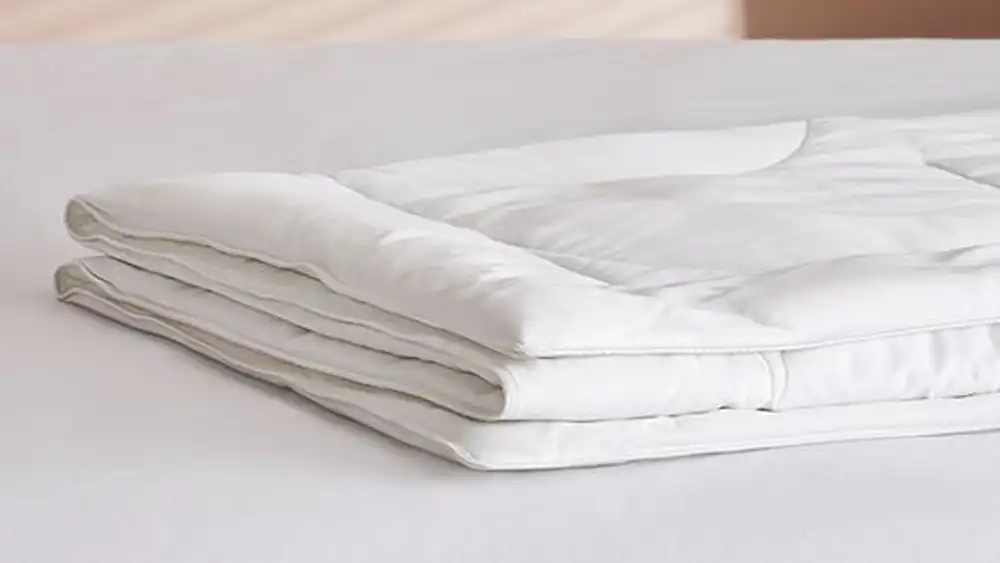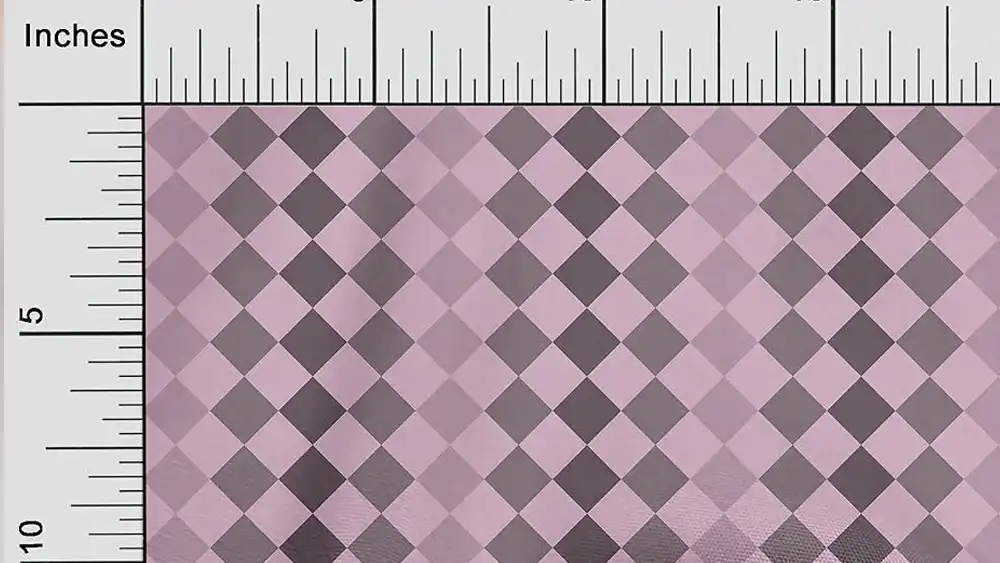In the world of quilting, every stitch, every fabric choice, counts towards creating a masterpiece. Among the myriad considerations, one often overlooked aspect is the GSM of quilting fabric. But what exactly is GSM? Why does it matter?
Let’s delve into the intricacies of quilting fabric GSM to understand its role in creating quilts that are not just beautiful but also durable and comfortable.
What is GSM in Quilting Fabric?

Quilting Fabric GSM, or Grams per Square Meter, refers to the weight of a fabric per square meter. It is a measure of fabric density, indicating how much fabric is packed into a given area. In simpler terms, higher GSM means denser, heavier fabric, while lower GSM indicates lighter, more breathable fabric.
Importance of GSM in Quilting Fabric
The importance of GSM in quilting fabric cannot be overstated. GSM, or Grams per Square Meter, serves as a crucial metric for determining the density and weight of the fabric. This metric plays a pivotal role in various aspects of quilting, including the overall quality, durability, and comfort of the finished quilt. Fabrics with higher GSM values are denser and heavier, offering better insulation and durability, ideal for winter quilts or projects requiring added warmth.
On the other hand, lower GSM fabrics are lighter and more breathable, suitable for summer quilts or projects where flexibility and airflow are essential. By understanding and considering the GSM of quilting fabric, quilters can make informed decisions to achieve the desired characteristics and performance in their quilts.
Factors Affecting Quilting Fabric GSM

Quilting fabric GSM, or Grams per Square Meter, is a crucial metric that determines the weight and density of the fabric, impacting its overall quality and characteristics.
Several factors influence the GSM of quilting fabric:
Fiber Content: The type of fibers used in the fabric significantly affects its GSM. Natural fibers like cotton typically result in lower GSM fabrics, while synthetic fibers such as polyester or nylon tend to produce higher GSM fabrics.
Weave Pattern: The weave pattern of the fabric plays a crucial role in determining its GSM. Fabrics with tighter weaves generally have higher GSM values, as they contain more fibers per square meter, resulting in denser and heavier fabric.
Thread Count: Thread count refers to the number of threads per square inch of fabric. Fabrics with higher thread counts usually have higher GSM values, as they have more threads packed into the same area, contributing to increased density and weight.
Finishing Processes: The finishing processes applied to the fabric can alter its density and, consequently, its GSM. Treatments like mercerization, which strengthens and enhances the luster of cotton fibers, can increase the fabric’s GSM. Conversely, processes like brushing may reduce the fabric’s GSM by loosening the fibers.
Blend Ratio: Fabrics made from blends of different fibers can exhibit varied GSM values based on the composition of the blend. For example, a fabric blend containing a higher percentage of heavyweight fibers will likely result in a higher GSM fabric.
Understanding these factors is essential for quilters when selecting quilting fabrics, as it allows them to choose fabrics with the desired weight, density, and characteristics for their projects. By considering the fiber content, weave pattern, thread count, finishing processes, and blend ratio, quilters can ensure that they select fabrics with the optimal GSM to achieve their desired quilting outcomes.
What Determines Fabric Density & Fabric Weight

Fabric density and fabric weight are determined by several factors, each contributing to the overall characteristics of the fabric.
Here’s an explanation of what determines fabric density and fabric weight:
Fiber Type and Composition:
The type of fibers used in the fabric, such as cotton, polyester, wool, or blends, significantly influences its density and weight.
Different fibers have varying densities and weights, which directly impact the fabric’s overall characteristics.
Fiber Diameter and Fineness:
The diameter and fineness of the fibers also play a role in determining fabric density and weight.
Finer fibers tend to create lighter and more delicate fabrics, while thicker fibers result in heavier and denser fabrics.
Yarn Construction:
Yarn construction refers to how fibers are spun and twisted together to form yarns.
Different yarn constructions, such as single ply, plied, or textured yarns, can affect the density and weight of the fabric.
Weave Structure:
The weave structure of the fabric, such as plain weave, twill weave, or satin weave, influences its density and weight.
Tighter weave structures generally result in denser and heavier fabrics, while looser weaves create lighter and more breathable fabrics.
Fabric Thickness and Thickness Variation:
The thickness of the fabric and variations in thickness across the fabric surface contribute to its density and weight.
Thicker fabrics with consistent thickness throughout tend to be denser and heavier, while fabrics with varying thickness may have lighter or more textured appearances.
Fabric Treatments and Finishes:
Treatments and finishes applied to the fabric, such as sizing, coating, or finishing agents, can affect its density and weight.
These treatments may add bulk or stiffness to the fabric, increasing its weight and density.
Fabric Structure and Design:
The overall structure and design of the fabric, including factors like pile height, embossing, or quilting, can influence its density and weight.
Fabrics with complex structures or designs may have varying densities and weights across different areas.
By considering these factors, fabric manufacturers can control and manipulate the density and weight of the fabric to meet specific requirements for different applications, from lightweight apparel fabrics to heavy-duty upholstery materials.
| Factors | Description |
|---|---|
| Fiber Type and Composition | The type of fibers used in the fabric, such as cotton, polyester, wool, or blends, significantly influences its density and weight. Different fibers have varying densities and weights. |
| Fiber Diameter and Fineness | The diameter and fineness of the fibers also play a role in determining fabric density and weight. Finer fibers tend to create lighter and more delicate fabrics, while thicker fibers result in heavier and denser fabrics. |
| Yarn Construction | Yarn construction refers to how fibers are spun and twisted together to form yarns. Different yarn constructions, such as single ply, plied, or textured yarns, can affect the density and weight of the fabric. |
| Weave Structure | The weave structure of the fabric, such as plain weave, twill weave, or satin weave, influences its density and weight. Tighter weave structures generally result in denser and heavier fabrics, while looser weaves create lighter and more breathable fabrics. |
| Fabric Thickness and Thickness Variation | The thickness of the fabric and variations in thickness across the fabric surface contribute to its density and weight. Thicker fabrics with consistent thickness throughout tend to be denser and heavier, while fabrics with varying thickness may have lighter or more textured appearances. |
| Fabric Treatments and Finishes | Treatments and finishes applied to the fabric, such as sizing, coating, or finishing agents, can affect its density and weight. These treatments may add bulk or stiffness to the fabric, increasing its weight and density. |
| Fabric Structure and Design | The overall structure and design of the fabric, including factors like pile height, embossing, or quilting, can influence its density and weight. Fabrics with complex structures or designs may have varying densities and weights across different areas. |
This table provides an overview of the key factors that determine fabric density and fabric weight, highlighting their importance in understanding the characteristics and performance of different types of fabrics.
Choosing the Right GSM for Your Quilt

How to choose the proper GSM quilt?
Selecting the right GSM (Grams per Square Meter) for your quilt is essential for achieving the desired comfort, durability, and aesthetic appeal.
Several factors should be considered when choosing the GSM of quilting fabric:
- Quilt Intended Use: Determine the purpose of your quilt. If you’re making a lightweight summer quilt, opt for fabrics with lower GSM values for breathability and flexibility. For winter quilts or projects requiring added warmth, choose fabrics with higher GSM values for insulation and coziness.
- Climate and Season: Consider the climate and season in which the quilt will be used. In hot climates, lighter fabrics with lower GSM values are preferable to ensure breathability and comfort. Conversely, in colder climates, heavier fabrics with higher GSM values provide better insulation and warmth.
- Personal Preference and Comfort: Ultimately, your personal preference and comfort should guide your choice of GSM. Some quilters may prefer the crispness and lightweight feel of lower GSM fabrics, while others may prefer the plushness and warmth of higher GSM fabrics. Select the GSM that feels just right for you and aligns with your quilting vision.
By considering factors such as quilt intended use, climate and season, and personal preference, you can choose the perfect GSM for your quilt, ensuring that it meets your comfort, durability, and aesthetic requirements. Whether you opt for lightweight fabrics for summer quilts or heavyweight fabrics for winter quilts, selecting the right GSM is key to creating a quilt that you’ll cherish for years to come.
How to Measure GSM in Quilting Fabric

Measuring GSM (Grams per Square Meter) in quilting fabric is a straightforward process that requires minimal tools and effort. Here’s a step-by-step guide on how to measure GSM in quilting fabric:
Tools Required:
- Fabric sample (ideally measuring 10cm x 10cm)
- Precision scale
- Ruler
Step-by-Step Measurement Process:
Prepare the Fabric Sample:
Start by cutting a square fabric sample with precise dimensions of 10cm x 10cm. Ensure that the edges are straight and the corners are square to obtain accurate measurements.
Weigh the Fabric Sample:
Place the fabric sample on a precision scale and record the weight in grams. Make sure to weigh the fabric sample accurately to obtain reliable results.
Measure the Dimensions:
Using a ruler, measure the length and width of the fabric sample in centimeters. Ensure that you measure from edge to edge, including any selvedges or seams.
Calculate GSM:
Once you have recorded the weight of the fabric sample in grams and its dimensions in centimeters, you can calculate the GSM using the following formula:
𝐺𝑆𝑀 = Weight of fabric in grams / Area of fabric in square meters
To find the area of the fabric sample in square meters, first convert the dimensions from centimeters to meters by dividing each dimension by 100 (since 1 meter = 100 centimeters), and then multiply the length by the width.Once you have the area in square meters, divide the weight of the fabric sample in grams by the area in square meters to obtain the GSM value.
By following these simple steps, you can accurately measure the GSM of quilting fabric samples, allowing you to make informed decisions when selecting fabrics for your quilting projects. Whether you’re looking for lightweight fabrics for summer quilts or heavyweight fabrics for winter quilts, knowing the GSM will help you choose fabrics that meet your specific needs and preferences.
Common GSM Ranges for Quilting Fabric

Understanding the common GSM (Grams per Square Meter) ranges for quilting fabric is essential for selecting the right fabric for your quilting projects. Here’s an overview of the typical GSM ranges and their characteristics:
1. Lightweight Fabrics (100-150 GSM):
- Ideal for summer quilts and projects requiring breathability and flexibility.
- Lightweight fabrics offer excellent drape and are easy to handle during quilting.
- They provide a comfortable and airy feel, making them suitable for warm climates or quilts intended for use during the summer months.
2. Medium Weight Fabrics (150-250 GSM):
- Versatile fabrics suitable for a wide range of quilting projects.
- Medium weight fabrics strike a balance between comfort and durability, offering adequate warmth without feeling too heavy.
- They provide good insulation and drape, making them suitable for quilts intended for year-round use or projects with moderate insulation requirements.
3. Heavyweight Fabrics (250+ GSM):
- Perfect for winter quilts and projects requiring extra warmth and coziness.
- Heavyweight fabrics offer superior insulation and provide a substantial feel, ideal for cold climates or quilts intended for use during the winter months.
- They offer excellent durability and resilience, making them suitable for quilts that will receive frequent use or require added durability.
| Fabric GSM Ranges | Description |
|---|---|
| 100-150 GSM | Lightweight fabrics ideal for summer quilts and projects requiring breathability and flexibility. Offers excellent drape and comfort, suitable for warm climates. |
| 150-250 GSM | Versatile fabrics providing a balance between comfort and durability. Suitable for year-round use, offering moderate warmth and insulation. |
| 250+ GSM | Heavyweight fabrics perfect for winter quilts and projects requiring extra warmth and coziness. Offers superior insulation and durability, ideal for cold climates. |
This fabric GSM chart provides a quick reference for quilters to understand the characteristics and suitability of different GSM ranges for their quilting projects. Whether you’re looking for lightweight fabrics for summer quilts or heavyweight fabrics for winter quilts, this chart will help you select the right GSM to achieve your desired comfort, durability, and aesthetic appeal.
What GSM Indicates Quality
GSM (Grams per Square Meter) is an important metric in the textile industry, but it alone does not indicate quality. Instead, the appropriate GSM for a particular fabric depends on its intended use and the desired characteristics.
For instance, in some cases, a higher GSM might indicate a denser and heavier fabric, which could be desirable for certain applications such as upholstery or heavy-duty clothing. However, for other purposes like lightweight apparel or breathable linings, a lower GSM might be preferred.
Quality in fabric is determined by various factors beyond just GSM, including fiber type, weave construction, finishing processes, and overall craftsmanship. A high-quality fabric may have a GSM tailored to meet the specific needs of the intended application, ensuring optimal performance, durability, and aesthetic appeal.
Therefore, while GSM can provide valuable information about the weight and density of a fabric, it is only one aspect to consider when assessing quality. The suitability of the GSM for a particular use case, along with other factors contributing to fabric quality, should be evaluated comprehensively to determine the overall quality of the fabric.
FAQs about Quilting Fabric GSM
How does GSM affect the quality of quilting fabric?
GSM directly impacts the density, durability, and feel of quilting fabric. Higher GSM fabrics tend to be more durable and provide better insulation, while lower GSM fabrics offer breathability and flexibility.
Can I use different GSM fabrics in the same quilt?
Yes, you can mix and match fabrics with different GSM values to achieve desired textures and characteristics in your quilt. However, ensure that the fabrics complement each other in terms of weight and drape.
What GSM is best for quilting in hot climates?
For quilting in hot climates, opt for lightweight fabrics with lower GSM (around 100-150 GSM) to ensure breathability and comfort during warmer temperatures.
Does higher GSM mean better durability?
Generally, higher GSM fabrics tend to be more durable due to their denser construction. However, durability also depends on factors like fiber content, weave, and finishing processes.
How does GSM impact the cost of quilting fabric?
Fabrics with higher GSM typically require more materials and processing, resulting in higher production costs. As a result, higher GSM fabrics may be priced higher than lower GSM fabrics.
Can GSM affect the appearance of the quilt?
Yes, GSM can influence the overall appearance of the quilt, affecting its thickness, texture, and drape. Choosing the right GSM is crucial for achieving the desired aesthetic and functional qualities in your quilt.
Conclusion
Understanding the significance of quilting fabric GSM empowers quilters to make informed choices when selecting fabrics for their projects. By considering factors such as fiber content, weave, and intended use, quilters can choose the perfect GSM to enhance the quality, comfort, and beauty of their quilts.
Ready to explore the world of quilting fabric GSM and discover the perfect GSM for your next quilting project?
Dive deeper into the intricacies of quilting fabric GSM by browsing our collection of quilting fabrics. Whether you’re seeking lightweight fabrics for summer quilts or heavyweight fabrics for winter quilts, we have a wide range of GSM options to suit your needs. Contact us now and start quilting with confidence!
